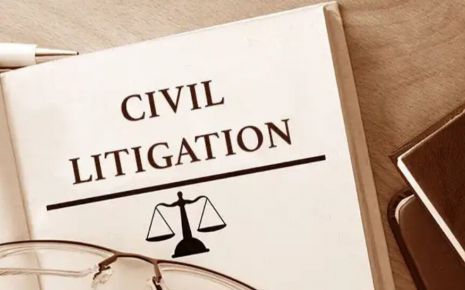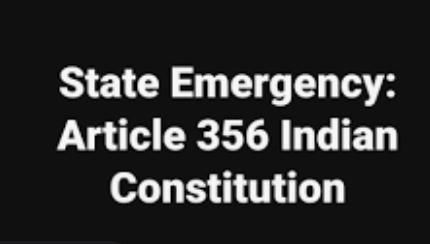A Comprehensive Guide to Prospectus and Remedies for Misrepresentation
Meaning of Prospectus
A prospectus is a formal document issued by a company that provides detailed information about the company's financial condition, business operations, management, and securities being offered for sale to the public. It serves as a comprehensive guide for potential investors to make informed decisions before investing in the company's securities, such as shares or debentures. The prospectus is a crucial tool for transparency and accountability in the process of raising funds from the public.
Key points about a prospectus:
In summary, a prospectus is a detailed document that companies use to communicate important information about their operations and securities to potential investors. It plays a vital role in investor protection and transparency in the process of raising capital from the public.
Statement in Lieu of Prospectus
A "Statement in Lieu of Prospectus" is a document required by companies in certain circumstances when they choose not to issue a full-fledged prospectus to the public in connection with an offer of securities. Instead of a comprehensive prospectus, this statement provides key information that investors would have found in a prospectus. The purpose is to ensure transparency and provide investors with essential details, even when a full prospectus is not being issued.
Here are some key points about a Statement in Lieu of Prospectus:
Contents of a Prospectus
These disclosures may include:
Formalities of Issue:
In summary, the prospectus is a comprehensive document that provides detailed information about a company and the securities it is offering to the public. The formalities of issuing a prospectus include preparing, registering, and distributing the document while ensuring compliance with regulatory requirements and providing accurate and complete information to potential investors.
Remedies for misrepresentation
A prospectus is a formal document issued by a company that provides detailed information about the company's financial condition, business operations, management, and securities being offered for sale to the public. It serves as a comprehensive guide for potential investors to make informed decisions before investing in the company's securities, such as shares or debentures. The prospectus is a crucial tool for transparency and accountability in the process of raising funds from the public.
Key points about a prospectus:
- Disclosure: A prospectus contains essential information that potential investors need to assess the financial health and prospects of the company. This includes financial statements, management discussions, business strategies, risk factors, and legal details.
- Legal Requirement: In many jurisdictions, it's a legal requirement for companies planning to offer their securities to the public. The purpose is to protect investors by ensuring they have accurate and sufficient information to make informed investment decisions.
- Contents: A prospectus typically includes sections on the company's history, business model, financial performance, risk factors, use of proceeds, management team, and terms of the securities being offered.
- Prospective Investors: The primary audience for a prospectus is potential investors who are considering purchasing the company's securities. The document aims to give them a clear understanding of the company's operations and its financial outlook.
- Regulatory Approval: In many jurisdictions, the prospectus must be approved by a regulatory authority, such as the Securities and Exchange Commission (SEC) in the United States or the Securities and Exchange Board of India (SEBI) in India.
- Advertising Restrictions: Companies are often restricted in how they can promote their securities to the public. The prospectus serves as the primary means of communication with potential investors.
- Updated Information: If there are any material changes in the company's financials or operations between the time of prospectus issuance and the time of the offering, the company may need to provide updates to potential investors through an addendum or supplementary prospectus.
- Liability and Accuracy: Companies are legally obligated to ensure the accuracy and completeness of the information presented in the prospectus. Misleading or false information can lead to legal consequences.
- Investor Protection: The prospectus serves as a critical tool for investor protection, ensuring that investors have access to accurate information before making investment decisions.
- Types of Prospectus: There are different types of prospectuses based on the nature of the offering. For example, a "red herring" prospectus is a preliminary version that doesn't include the final offering price. A "shelf prospectus" allows a company to offer securities periodically over a certain period without filing a new prospectus each time.
In summary, a prospectus is a detailed document that companies use to communicate important information about their operations and securities to potential investors. It plays a vital role in investor protection and transparency in the process of raising capital from the public.
Statement in Lieu of Prospectus
A "Statement in Lieu of Prospectus" is a document required by companies in certain circumstances when they choose not to issue a full-fledged prospectus to the public in connection with an offer of securities. Instead of a comprehensive prospectus, this statement provides key information that investors would have found in a prospectus. The purpose is to ensure transparency and provide investors with essential details, even when a full prospectus is not being issued.
Here are some key points about a Statement in Lieu of Prospectus:
- When It's Used: Companies use a Statement in Lieu of Prospectus when they are issuing shares or securities to the public in connection with their initial public offering (IPO) or subsequent public offerings. It's typically used when the company has already issued a prospectus for a previous offering and is making a subsequent offering.
- Contents: Similar to a prospectus, a Statement in Lieu of Prospectus contains essential information about the company's business, financial condition, management, and the securities being offered. It includes details that are crucial for potential investors to make informed investment decisions.
- Disclosure Requirements: The document is required to be filed with the regulatory authority, such as the Securities and Exchange Commission (SEC) in the United States or the Securities and Exchange Board of India (SEBI) in India. It must comply with the legal disclosure requirements specified by the regulatory authority.
- Purpose: The statement serves as a way for the company to provide key information to investors even when it's not issuing a full prospectus. This ensures that investors have access to relevant information to assess the investment opportunity.
- Abbreviated Format: Since it's not a full prospectus, a Statement in Lieu of Prospectus is usually shorter and more focused. It includes key information without the extensive details that a full prospectus would provide.
- Legal Requirements: Companies must ensure that the information provided in the statement is accurate and complete. Any false or misleading information can have legal consequences.
- Investor Protection: The statement contributes to investor protection by ensuring that relevant information is available to potential investors, even when a full prospectus is not being issued.
- Supplementary Information: If there are any material changes in the company's financial condition or operations between the time of filing the statement and the time of the offering, the company may need to provide updates to potential investors.
Contents of a Prospectus
- Every Prospectus to be Dated: The prospectus must have a clear and visible date of issuance. This is important because it helps investors know when the document was created and provides a reference point for assessing the timeliness of the information provided.
- Every Prospectus to be Registered: Before a company can distribute a prospectus to the public, it needs to be registered with the relevant regulatory authority. This is typically a securities regulator such as the Securities and Exchange Commission (SEC) in the United States or the Securities and Exchange Board of India (SEBI) in India. Registration ensures that the information in the prospectus is accurate, complete, and compliant with regulatory standards.
- Expert's Consent: If the prospectus contains statements or information that is based on the opinion of an expert, such as an auditor, accountant, or engineer, their consent must be obtained and included in the prospectus. This ensures that the expert is aware of their statement being used and agrees with its inclusion in the document.
- Disclosures to be Made: The prospectus is required to disclose a wide range of information to provide potential investors with a clear and comprehensive view of the company's financial health, operations, management, and the securities being offered.
These disclosures may include:
- Financial Statements: Audited financial statements, including balance sheets, income statements, cash flow statements, and notes to financials.
- Business Overview: Information about the company's history, business model, products/services, industry trends, and competitive landscape.
- Management: Details about key management personnel, their experience, qualifications, and roles in the company.
- Risk Factors: A list of potential risks and uncertainties that could affect the company's financial performance or prospects.
- Use of Proceeds: How the funds raised from the offering will be used by the company.
- Offering Details: Information about the securities being offered, such as the number of shares, offering price, underwriters, and any rights or restrictions.
- Legal and Regulatory Compliance: Disclosures related to legal proceedings, government regulations, and any material legal issues.
- Market Conditions: Factors affecting the market for the securities being offered, such as demand, liquidity, and secondary market trading.
Formalities of Issue:
- Preparation and Review: The company prepares the prospectus, ensuring that all required information is accurate, complete, and consistent. The document undergoes thorough review to ensure compliance with legal and regulatory requirements.
- Date of Prospectus: The prospectus is dated, indicating the date of issuance. This is the starting point for assessing the timeliness of the information.
- Registration: The prospectus is submitted to the relevant regulatory authority for registration. The regulatory authority reviews the prospectus to ensure it meets legal and disclosure standards.
- Expert's Consent: If the prospectus includes expert opinions or statements, the company obtains consent from the experts and includes their consent in the document.
- Printing and Distribution: Once registered, the prospectus is printed and made available to potential investors. It can be distributed in physical form or electronically.
- Public Offering: The company makes the public offering of its securities. Interested investors can review the prospectus to make informed investment decisions.
- Continuous Disclosure: If there are material changes or updates between the time of registration and the offering, the company may need to provide supplementary or updated information to potential investors.
In summary, the prospectus is a comprehensive document that provides detailed information about a company and the securities it is offering to the public. The formalities of issuing a prospectus include preparing, registering, and distributing the document while ensuring compliance with regulatory requirements and providing accurate and complete information to potential investors.
Remedies for misrepresentation
-
Damages for Deceit:
- This remedy is available when the party knowingly makes a false statement with the intent to deceive the other party.
- Damages awarded aim to compensate for the actual losses suffered as a direct result of the deceitful misrepresentation.
-
Compensation:
- Compensation is available when the misrepresentation was not fraudulent but still resulted in losses due to the negligent behavior of the party making the statement.
- The injured party must prove that the misrepresentation was made negligently and that they relied on it to their detriment.
- Compensation aims to put the injured party in the position they would have been in had the misrepresentation not occurred.
-
Rescission for Misrepresentation:
- Rescission allows the injured party to unwind the contract, returning both parties to their original positions before the contract was formed.
- It's available when a contract was entered into based on a misrepresentation that induced the party to enter into the contract.
- Rescission restores parties to their pre-contractual positions, with consideration returned and obligations discharged.
-
Liability for Untrue Statements in the Prospectus:
- If a prospectus contains false or misleading information, investors who relied on this information to make investment decisions may have legal remedies.
- Investors may be able to seek damages, which could cover the financial losses suffered due to the untrue statements.
- Regulatory authorities might also impose penalties on those responsible for the untrue statements, ensuring accountability.
Law Article in India
Legal Question & Answers
Lawyers in India - Search By City
LawArticles
How To File For Mutual Divorce In Delhi

How To File For Mutual Divorce In Delhi Mutual Consent Divorce is the Simplest Way to Obtain a D...
Increased Age For Girls Marriage

It is hoped that the Prohibition of Child Marriage (Amendment) Bill, 2021, which intends to inc...
Facade of Social Media

One may very easily get absorbed in the lives of others as one scrolls through a Facebook news ...
Section 482 CrPc - Quashing Of FIR: Guid...

The Inherent power under Section 482 in The Code Of Criminal Procedure, 1973 (37th Chapter of t...
The Uniform Civil Code (UCC) in India: A...

The Uniform Civil Code (UCC) is a concept that proposes the unification of personal laws across...
Role Of Artificial Intelligence In Legal...

Artificial intelligence (AI) is revolutionizing various sectors of the economy, and the legal i...







Please Drop Your Comments